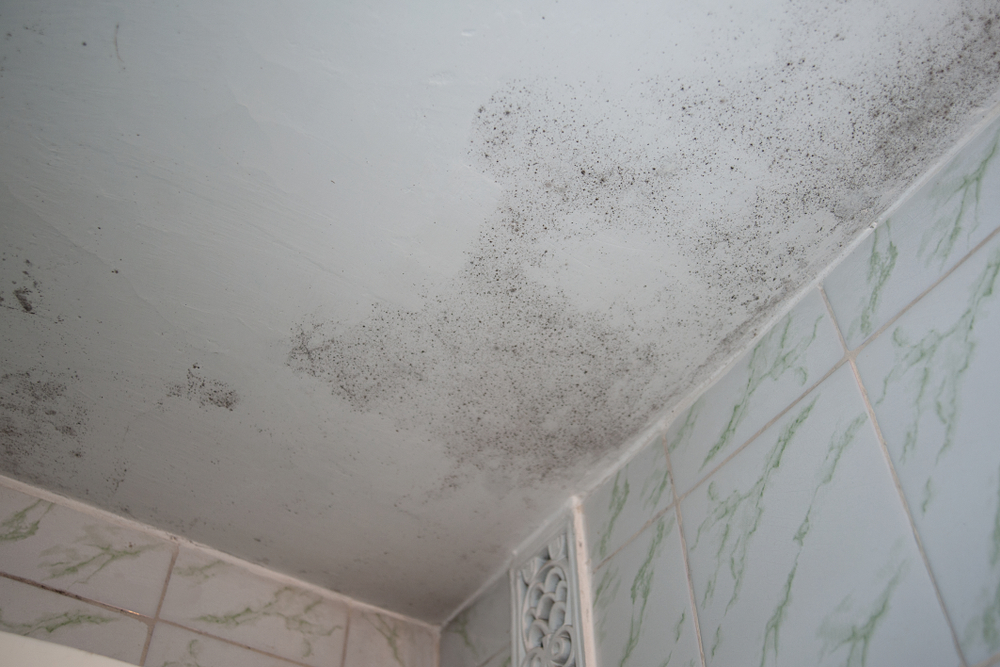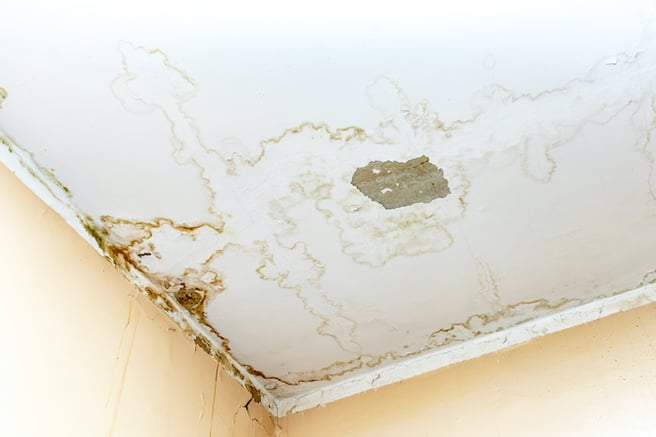What Moisture Results in Bathroom Water Harm
What Moisture Results in Bathroom Water Harm
Blog Article
We have found the article relating to How to Repair and Prevent Bathroom Water Damage? below on the internet and decided it made good sense to share it with you on this page.

Water damage usually takes place in the shower room due to the water used day-to-day. Occasionally, the damages could be a little mold from the shower. Various other times, it's large damage on your floor. Whatever it is, it is constantly great to know the cause as well as avoid it before it occurs.
This overview will certainly undergo several of the typical sources of water damage in the washroom. We will certainly likewise examine what you can do to prevent these reasons from harming your washroom. Let's dive in.
5 Common Causes of Water Damage in Restrooms
These are the typical reasons you would have water damage in your washrooms and also exactly how you can spot them:
Ruptured or Leaking Pipes
There are lots of pipes lugging water to various parts of your restroom. Some pipelines take water to the bathroom, the sink, the faucets, the shower, as well as several other locations. They crisscross the small location of the bathroom.
Once in a while, these pipelines can get rustic as well as ruptured. Various other times, human action could create them to leakage. When this occurs, you'll discover water in the corners of your washroom or on the wall.
To detect this, watch out for bubbling wall surfaces, mold and mildews, or mildew. Call a specialist emergency situation plumbing technician to fix this when it happens.
Splits in your wall tilesv
Shower room wall floor tiles have been particularly developed for that objective. They shield the wall from dampness from people taking showers. Nevertheless, they are not indestructible.
In some cases, your washroom wall ceramic tiles split and also enable some dampness to seep right into the wall. This could potentially damage the wall surface if you don't take any type of action. If you discover a fracture on your wall ceramic tiles, fix it quickly. Do not wait up until it destroys your wall surface.
Overflowing toilets and also sinks
As people, often we make mistakes that can trigger some water damage in the restroom. For example, leaving your sink faucet on could trigger overflowing as well as damage to various other parts of the washroom with moisture.
Also, a faulty commode can trigger overflowing. As an example, a damaged bathroom deal with or other parts of the tank. When this occurs, it could harm the floor.
As quickly as you observe an overflowing sink or commode, call a plumbing professional to assist deal with it quickly.
Roofing Leaks
Often, the trouble of water damage to the restroom may not originate from the restroom. As an example, a roofing system leakage can trigger damages to the bathroom ceiling. You can spot the damage done by considering the water discolorations on the ceiling.
If you discover water spots on your ceiling, examine the roofing to see if it's harmed. After that, call a professional to aid resolve the concern.
Excess Wetness
It's awesome to have that lengthy shower as well as dash water while you dance around as well as imitate you're carrying out, however sometimes these acts might trigger water damage to your shower room.
Spraying water around can cause water to visit edges and also create mold and mildews. Watch just how you spread out excess moisture around, and when you do it, clean it up to prevent damage.
Conclusion
Water damage to your restroom can be aggravating. Nonetheless, you can handle it if you avoid a few of the reasons discussed in this overview. Call an expert emergency plumber if you observe any serious damage.
How to Repair a Water-Damaged Wall in the Bathroom
All you need to know to repair bathroom wall water damage – from identifying the water source to finishing the repair professionally. If you don’t act quickly to resolve a water damage problem, you could find that it develops into a mold issue and/or cause structural damage to your home. Follow this guide to repair your bathroom before it's too late.
All you need to know to repair bathroom wall water damage
Water damage is a common household problem, and one that, if left unrepaired, can quickly lead to structural problems and health issues. The two most likely rooms where water damage may occur is the bathroom and the kitchen – where water is used often and there is high humidity.
What is water damage?
It is easy to think of water damage as caused by a flood or leaking tap or burst water pipe. However, when water damage is assessed, there are three main categories into which water falls (as classified by the American National Standards Institute). These categories are defined as:
Category 1 Water – ‘Clear Water’
This is sanitary water. There is usually no major threat to health by washing with this water, drinking it, or inhaling if it is streaming. Most water that enters your home will be category 1 water, while most water leaving your home will be either category 2 or 3 water. It may also come from melting snow, rainwater and water tanks.
Damage caused by this type of water can usually be repaired or restored, though this doesn’t mean that there are no potential health issues.
Category 2 Water – ‘Grey Water’
This is contaminated water – sometimes considerably so – and will cause illness if consumed or if it comes into contact with your skin. Water damage in this category is often caused by overflows from toilet bowls, and damage to washing machines and dishwashers. While damaged items might still be repaired or restored after damage by grey water, it is more difficult and more expensive to do so.
If the water damage in your home has been caused by grey water, it is advisable to have repairs made by professionals.
Over time, grey water will deteriorate and become black water.
Category 3 Water – ‘Black Water’
Category 3 water, also known as black water, is highly contaminated and a great risk to health. This may contain raw sewage, heavy metals, and other toxic substances. It will smell terrible.
If this is the water that has caused damage in your bathroom, do not touch it. Stop the water flowing if possible, seal the room and call the experts: it really isn’t worth the risk of ill health and disease that could be fatal. It is very unlikely that items can be repaired or restored if they have been damaged by black water.
https://www.porterscleaning.com/blog/how-to-repair-a-water-damaged-wall-in-the-bathroom/

How to Repair a Water-Damaged Wall in the Bathroom
All you need to know to repair bathroom wall water damage – from identifying the water source to finishing the repair professionally. If you don’t act quickly to resolve a water damage problem, you could find that it develops into a mold issue and/or cause structural damage to your home. Follow this guide to repair your bathroom before it's too late.
All you need to know to repair bathroom wall water damage
Water damage is a common household problem, and one that, if left unrepaired, can quickly lead to structural problems and health issues. The two most likely rooms where water damage may occur is the bathroom and the kitchen – where water is used often and there is high humidity.
What is water damage?
It is easy to think of water damage as caused by a flood or leaking tap or burst water pipe. However, when water damage is assessed, there are three main categories into which water falls (as classified by the American National Standards Institute). These categories are defined as:
Category 1 Water – ‘Clear Water’
This is sanitary water. There is usually no major threat to health by washing with this water, drinking it, or inhaling if it is streaming. Most water that enters your home will be category 1 water, while most water leaving your home will be either category 2 or 3 water. It may also come from melting snow, rainwater and water tanks.
Damage caused by this type of water can usually be repaired or restored, though this doesn’t mean that there are no potential health issues.
Category 2 Water – ‘Grey Water’
This is contaminated water – sometimes considerably so – and will cause illness if consumed or if it comes into contact with your skin. Water damage in this category is often caused by overflows from toilet bowls, and damage to washing machines and dishwashers. While damaged items might still be repaired or restored after damage by grey water, it is more difficult and more expensive to do so.
If the water damage in your home has been caused by grey water, it is advisable to have repairs made by professionals.
Over time, grey water will deteriorate and become black water.
Category 3 Water – ‘Black Water’
Category 3 water, also known as black water, is highly contaminated and a great risk to health. This may contain raw sewage, heavy metals, and other toxic substances. It will smell terrible.
If this is the water that has caused damage in your bathroom, do not touch it. Stop the water flowing if possible, seal the room and call the experts: it really isn’t worth the risk of ill health and disease that could be fatal. It is very unlikely that items can be repaired or restored if they have been damaged by black water.
https://www.porterscleaning.com/blog/how-to-repair-a-water-damaged-wall-in-the-bathroom/
Hopefully you enjoyed our topic on How to Repair and Prevent Bathroom Water Damage?. Thank you for taking the time to browse our blog. Sharing is caring. You won't know, you could be doing someone a favor. Thanks a lot for your time. Kindly stop by our blog back soon.
Book Maintenance Report this page